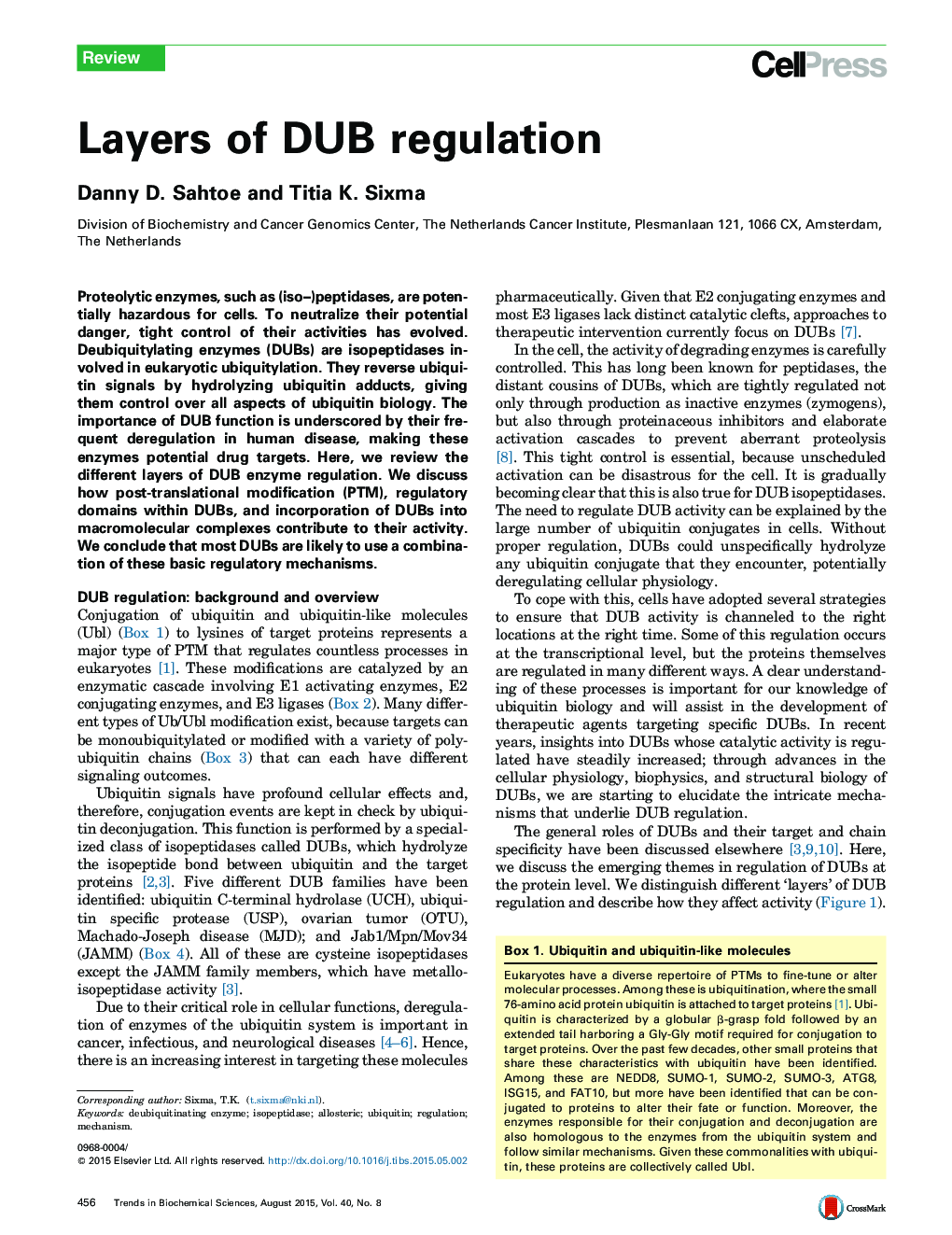| Article ID | Journal | Published Year | Pages | File Type |
|---|---|---|---|---|
| 2030567 | Trends in Biochemical Sciences | 2015 | 12 Pages |
•Deubiquitylating enzymes (DUBs) are tightly regulated at different layers.•Internal domains and external proteins can contribute to regulation.•Mechanisms of DUB regulation involve PTMs, recruitment, and modulation of catalysis.•Multiple types of allosteric regulation can impinge on DUB activity simultaneously.
Proteolytic enzymes, such as (iso–)peptidases, are potentially hazardous for cells. To neutralize their potential danger, tight control of their activities has evolved. Deubiquitylating enzymes (DUBs) are isopeptidases involved in eukaryotic ubiquitylation. They reverse ubiquitin signals by hydrolyzing ubiquitin adducts, giving them control over all aspects of ubiquitin biology. The importance of DUB function is underscored by their frequent deregulation in human disease, making these enzymes potential drug targets. Here, we review the different layers of DUB enzyme regulation. We discuss how post-translational modification (PTM), regulatory domains within DUBs, and incorporation of DUBs into macromolecular complexes contribute to their activity. We conclude that most DUBs are likely to use a combination of these basic regulatory mechanisms.
